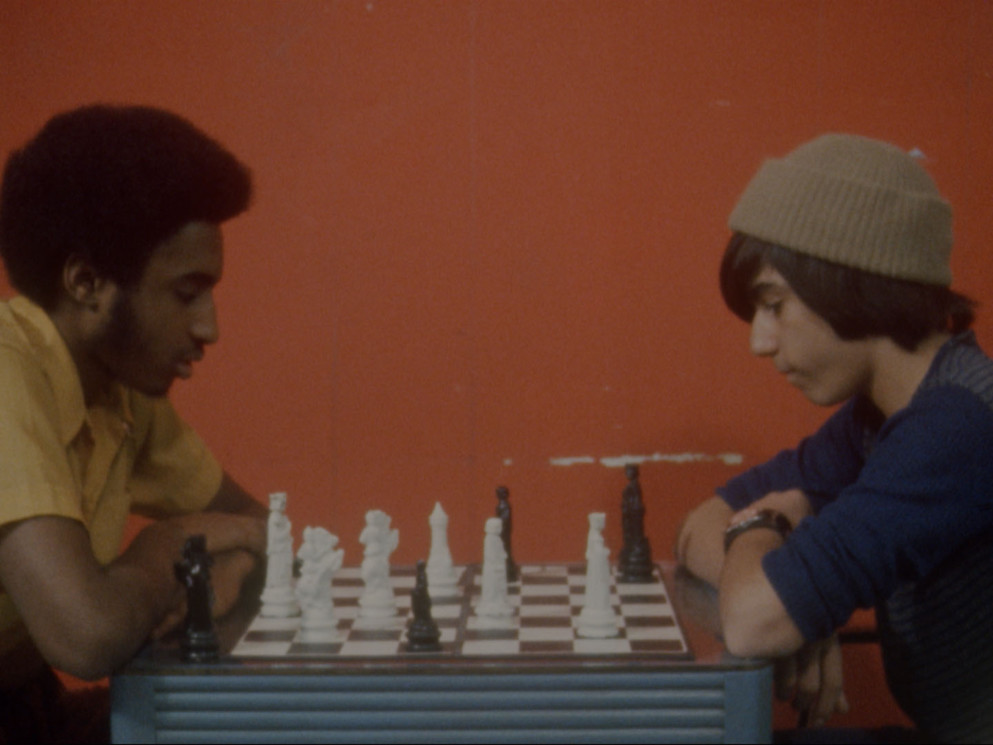
An unfinished film about the troubled youths and drug addicts going through rehabilitation in Yonkers, New York.
EN
“Mangolte's collaboration with Akerman is vividly documented in photographs by Jane Stein of the shoot of Hanging Out Yonkers (Belgium, 1973), Akerman's first, uncompleted, documentary. Stein's original offering of a couch in New York in 1971 launched the filmmaker on this decisive period of her career: her photos offer a rare glimpse of Akerman's creative process and the community around her at the time. And Mangolte's precise eve and exuberant intelligence are as evident in her account of Akerman's final work, the five-screen and soundscape installation NOW (2015), as they are in the stories she tells of introducing Akerman to the avant-garde forty years earlier.”
Patricia White1
Janet Bergstrom: What was the idea behind Hanging Out Yonkers (unfinished)? The rushes exist in Brussels, but I haven't been able to see them.
Babette Mangolte: There is nothing but rushes, and half of them have been lost. It's beautiful. It was shot on reversal film (which means there was no negative), so the rushes are the original footage. There was never any work print made that I know of. Chantal was given a little money to make a film involving kids between eleven and fourteen who were involved in drugs and came to a halfway house that was kind of a meeting place for them. Some of them lived there. They would come at night. Some of them came on drugs, but they were not supposed to. Chantal befriended them. The film was commissioned through a close friend of Jane Stein's, Myra Farhy, who worked there. The money gave her a little income, but the film took a lot of it. I borrowed a Beaulieu camera to shoot it; it was a very small 16mm camera for amateurs. Chantal maybe made a little monev, but I did not. I might have even paid for my own subway tokens. We did not have a car, and Yonkers is pretty far, an hour and fifteen minutes by subway. Then we had to walk. It was a bit of an ordeal to go there, but it was an important experience for both of us because we became genuinely interested in some of the kids and also in that sense of observing. It was indeed a documentarythe first documentary Chantal had ever done. Everything else was fiction. News from Home is a kind of documentary, too, but a borderline documentary. That was the only straight documentary before Sud (South, France/Belgium) in 1999.
Was it supposed to have voice-over narration?
I think the idea was to shoot footage and put it into a presentable form so it could be shown to a few people. It was not made to be shown on PBS or to show to Jonas Mekas for theatrical distribution. It was an in-house production. The first job you usually got when you left film school was a training film; this was the equivalent. The people who founded that program (which was not very well funded) decided it would be good to have some kind of visual material to show. In a way it was promotional, but it was meant to observe and be aware of tension. There was no script. We went there three times a week and shot whatever we saw. Chantal did not stage things, but she got to know the people, exactly like Jean-Pierre Gorin did in his documentary My Crasy Life (US/U'K), about Samoan gangs in Long Beach, California, that I shot in 1991. It's the kind of documentary that's essay-like.
Janet Bergstrom in conversation with Babette Mangolte2

